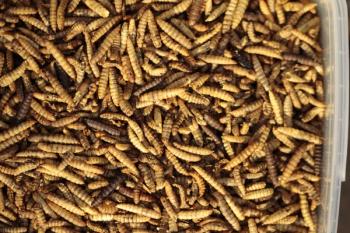
Blood Pressure Measurements in Cats
In a large study of cats in the United Kingdom, median systolic blood pressure measured by Doppler sphygmomanometry was 120.6 mm Hg, lower than the commonly reported mean of 125 mm Hg by direct intraarterial measurement.
In a large study of cats in the United Kingdom, median systolic blood pressure measured by Doppler sphygmomanometry was 120.6 mm Hg, lower than the commonly reported mean of 125 mm Hg by direct intraarterial measurement. Systolic blood pressure was affected by age, demeanor, sex, neuter status, and history of being a stray, according to a report published in the Journal of Veterinary Internal Medicine.
The study included 780 cats from two rehoming centers in the United Kingdom. The cats were originally part of a cross-sectional study of heart disease in apparently healthy cats. Enrolled cats were at least 6 months old and considered healthy based on physical examination and history. Cats with heart murmurs or echocardiographic evidence of heart disease were included. Exclusion criteria were hypertension (systolic blood pressure of 180 mm Hg or greater), medical treatment that could affect blood pressure, hyperthyroidism, systemic disease causing clinical signs, pregnancy, and lactation.
Before blood pressure measurement, cats were allowed to acclimate to the examination room for 5 to 20 minutes. Investigators assessed their temperament, classifying them as calm, cooperative but anxious, nervous, aggressive, or excited.
A single observer used a Doppler unit and techniques similar to those used in routine clinical practice to obtain systolic blood pressure measurements of all cats. Measurements were taken with cats in the position of their choice. Fur over the first palmar common digital artery was moistened with ultrasound gel but not shaved before the probe was applied.
The median systolic blood pressure was 120.6 mm Hg (interquartile range, 110.4—132.4 mm Hg). Systolic blood pressure increased significantly with estimated age except for a nonsignificant difference between juveniles (6–12 months old) and young adults (1–3 years old).
The median systolic blood pressure was significantly higher in male vs. female cats and in neutered cats vs. intact cats. Underweight cats had significantly lower systolic blood pressures than ideal-weight and overweight cats, with no significant difference between ideal-weight and overweight cats.
The position of the cats during measurement did not affect systolic blood pressure. Calm cats had significantly lower systolic blood pressure than cats who were cooperative but anxious. Both of these groups had lower systolic blood pressure than cats classified as nervous, excited, or aggressive (these demeanors were grouped together for analysis because few cats were excited or aggressive).
Factors independently associated with higher systolic blood pressure were increased age, being nervous, being male, being neutered, and being a stray (as opposed to relinquished by an owner). Cats with none of these factors would have an expected median systolic blood pressure of 104.3 mm Hg, say the authors. This model explained 29.2% of the blood pressure variation in the population, leaving most of the variation unaccounted for.
The findings of higher systolic blood pressures in older, male, and nervous cats are similar to those of other studies in cats, dogs, and people (with some variation). The finding of higher blood pressure in neutered than intact cats is opposite the results of a study in dogs. The authors conclude that the effect of neutering on systolic blood pressure “seems unclear across species.” The investigators speculate that stray cats might have had less human contact than relinquished cats, which could have affected their blood pressure measurements.
The authors note that the proportion of overweight and obese cats was lower in the study population than is reported in the general cat population. In addition, blood pressures were not measured under the same conditions as a routine clinic visit because the cats were given time to acclimate to the examination room. “The age, demeanor, sex, neuter status and history of being a stray should be taken into account when assessing systolic blood pressure in apparently healthy cats,” conclude the authors.
Dr. Laurie Anne Walden received her doctorate in veterinary medicine from North Carolina State University. After an internship in small animal medicine and surgery at Auburn University, she returned to North Carolina, where she has been in small animal primary care practice for over 20 years. Dr. Walden is also a board-certified editor in the life sciences and owner of Walden Medical Writing, LLC. She works as a full-time freelance medical writer and editor and continues to see patients a few days each month.
Newsletter
From exam room tips to practice management insights, get trusted veterinary news delivered straight to your inbox—subscribe to dvm360.






